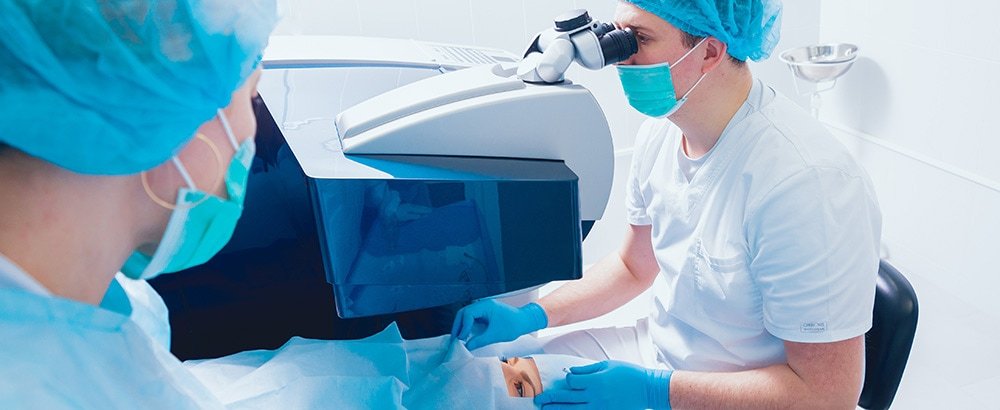SMILE (Small Incision Lenticule Extraction) is a modern laser vision correction technique that’s minimally invasive and flap-free, offering a faster recovery with fewer complications compared to traditional LASIK. But the success of your visual outcome heavily depends on how well you follow post-operative care guidelines.
Here’s a comprehensive guide to the do’s and don’ts after SMILE eye surgery, designed to help you heal comfortably and see clearly, as quickly and safely as possible.
✅ Post-SMILE Do’s: What You Should Absolutely Follow
🧴 1. Use Prescribed Eye Drops as Directed
- Antibiotics prevent infection.
- Steroid drops reduce inflammation.
- Lubricating drops relieve dryness and irritation.
⏱️ Follow the schedule provided by your surgeon. Missing doses can interfere with healing.
😎 2. Protect Your Eyes
- Wear UV-blocking sunglasses outdoors for at least 1–2 weeks.
- Use eye shields or goggles while sleeping (typically for 5–7 nights) to avoid accidental rubbing.
- Shield eyes from wind, dust, and bright lights.
🛌 3. Rest and Allow Time to Heal
- Limit screen time for the first 24–48 hours.
- Take short naps and avoid overexertion.
- Allow your body and eyes to recover naturally.
👨⚕️ 4. Attend All Follow-Up Appointments
- Your surgeon needs to check corneal healing, visual progress, and detect any early complications.
- Typically scheduled at 1 day, 1 week, 1 month, and 3 months post-op.
💧 5. Stay Hydrated and Keep Your Eyes Moist
- Drink plenty of water.
- Use artificial tears regularly, especially in dry environments or during screen use.
🧼 6. Maintain Good Hygiene
- Wash your hands before touching your face or applying drops.
- Use clean towels and pillowcases.
- Avoid contamination of eye drop bottles.
🍽️ 7. Eat a Nutrient-Rich Diet
- Include foods high in Vitamin A, C, and Omega-3 fatty acids to support eye health.
- Avoid alcohol in the early recovery phase as it can dehydrate your eyes.
❌ Post-SMILE Don’ts: What to Avoid After Surgery
👁️ 1. Don’t Rub or Touch Your Eyes
- Even though SMILE doesn’t involve a flap, rubbing your eyes can disrupt healing and cause irritation or infection.
- If your eyes itch or feel dry, use lubricating drops.
💻 2. Don’t Overuse Screens Right Away
- Avoid phones, computers, and TVs for the first 24 hours.
- Limit screen time to 30-minute intervals with breaks during the first week.
🧴 3. Don’t Use Eye Makeup or Creams Around Eyes
- Avoid for at least 7 days post-surgery to prevent contamination.
- Discard old eye makeup to avoid bacterial transfer.
🏋️ 4. Avoid Strenuous Exercise
- No intense workouts, heavy lifting, or high-impact sports for at least 1 week.
- Avoid yoga or inverted poses that increase eye pressure for the first few weeks.
🏊 5. Stay Out of Pools, Hot Tubs, and Natural Water
- No swimming or water exposure to your eyes for 2–3 weeks.
- Chlorine and bacteria can irritate healing tissue or cause infection.
🌫️ 6. Avoid Dusty, Smoky, or Polluted Environments
- These can irritate your eyes and delay healing.
- Wear protective eyewear if exposure is unavoidable.
🚘 7. Don’t Drive Until Cleared by Your Surgeon
- Most patients can drive within 1–3 days, but wait until your doctor confirms you meet vision requirements.
🚬 8. Avoid Smoking
- Smoking can delay healing and increase the risk of complications by reducing oxygen supply to your eyes.
⏱️ Quick Reference: Do’s and Don’ts Timeline
| Time Period | Do’s | Don’ts |
|---|---|---|
| First 24–48 hours | Rest, eye drops, eye shields, sunglasses | No screens, no rubbing, no driving |
| Days 3–7 | Resume light activities, continue drops | Avoid makeup, exercise, swimming, and rubbing |
| Weeks 2–4 | Resume workouts (if cleared), improve hydration | Still avoid swimming, dusty environments |
| 1 Month+ | Stable vision, less dryness | Resume all activities gradually if fully healed |
🚨 Warning Signs to Watch For
Call your surgeon immediately if you experience:
- Severe pain or eye pressure
- Sudden vision loss or persistent blurriness
- Increased redness, discharge, or swelling
- Light sensitivity or glare that worsens
Early detection of complications ensures faster intervention and better results.
💬 Final Thoughts
Following your SMILE post-operative care instructions is just as important as the surgery itself. While SMILE offers a gentle, rapid recovery, how you treat your eyes in the days and weeks afterward will significantly influence your visual outcome and long-term satisfaction.
📝 Tip: Set reminders for eye drops, limit screen time, and plan relaxing activities for the first few days post-op.




